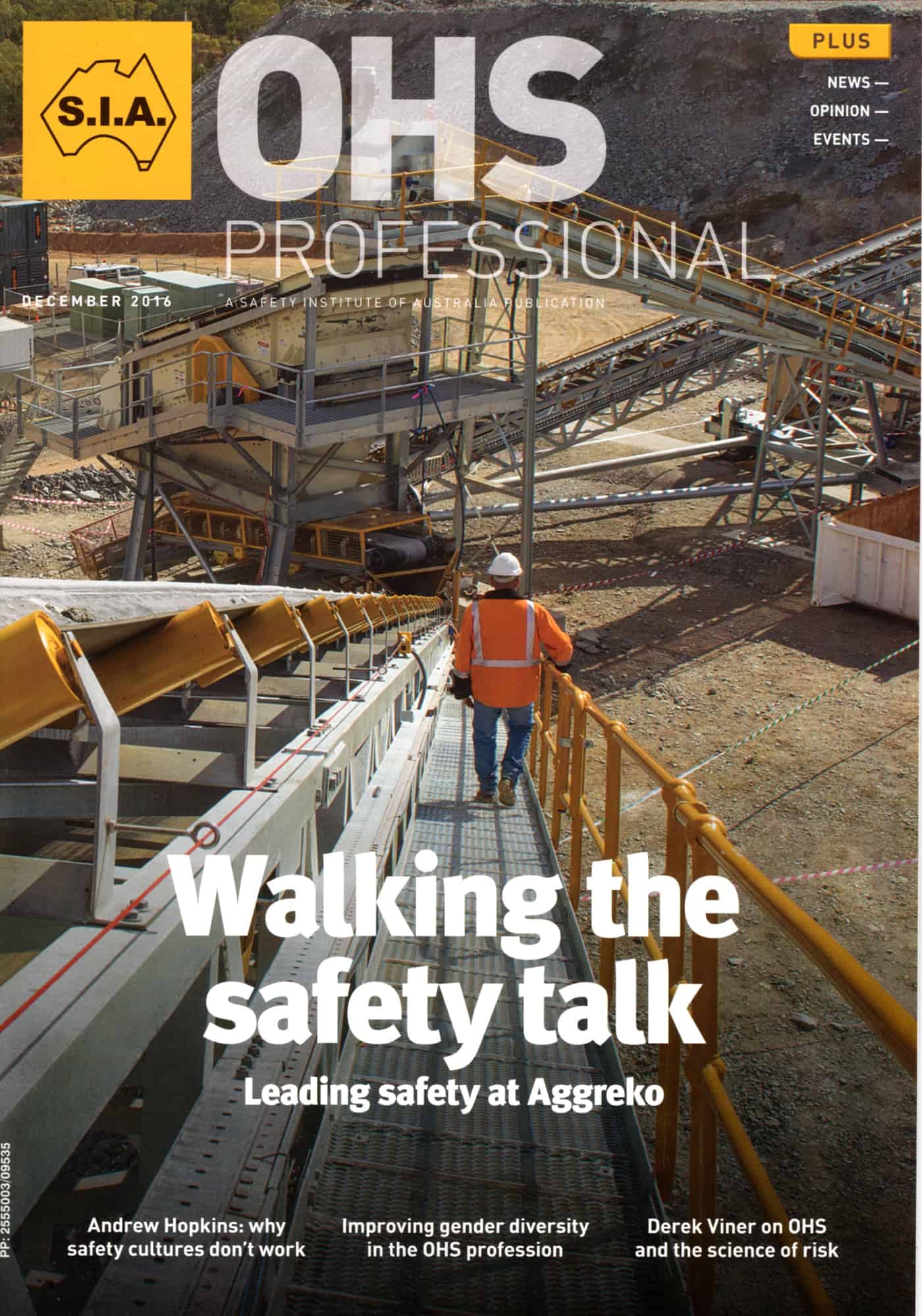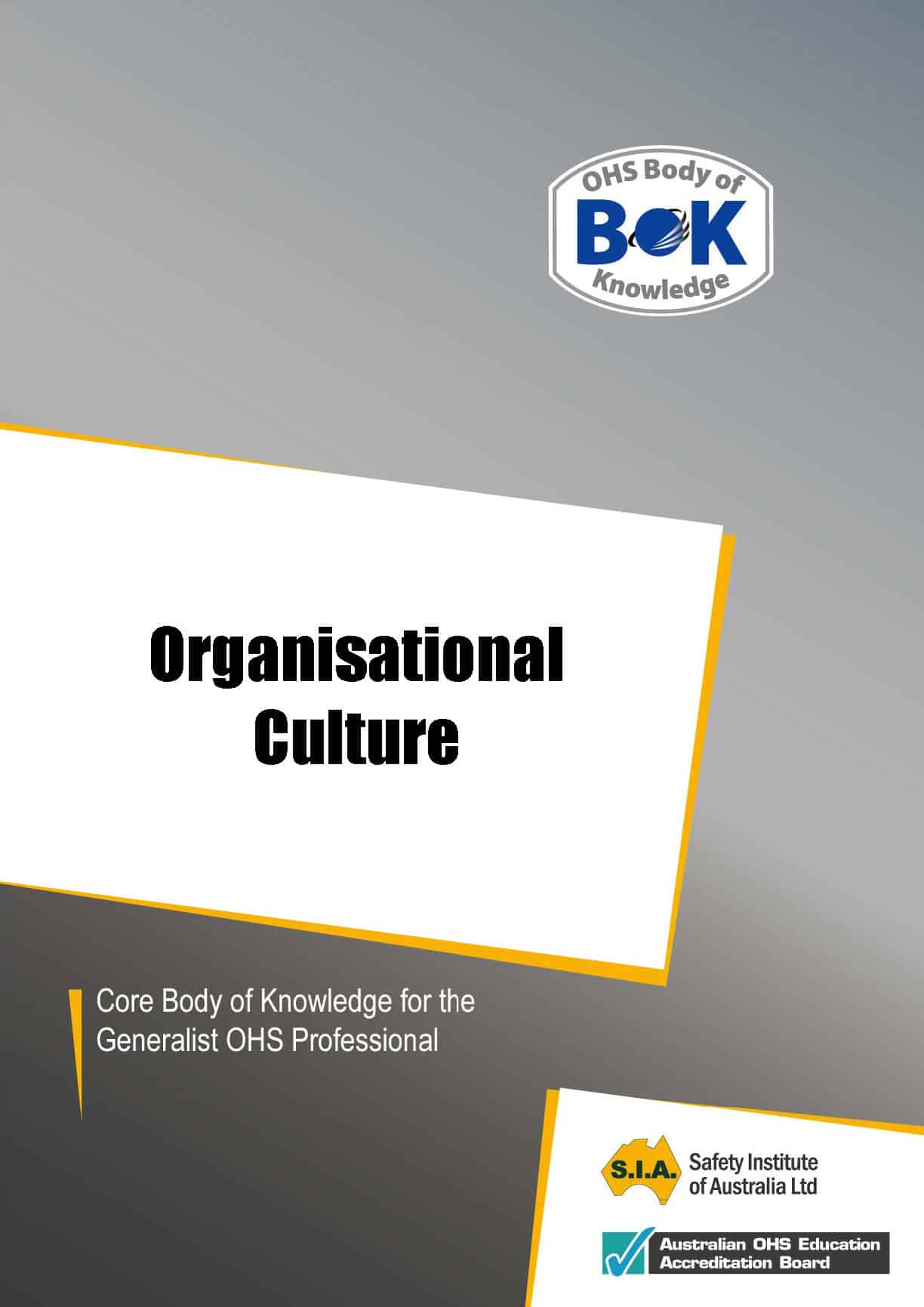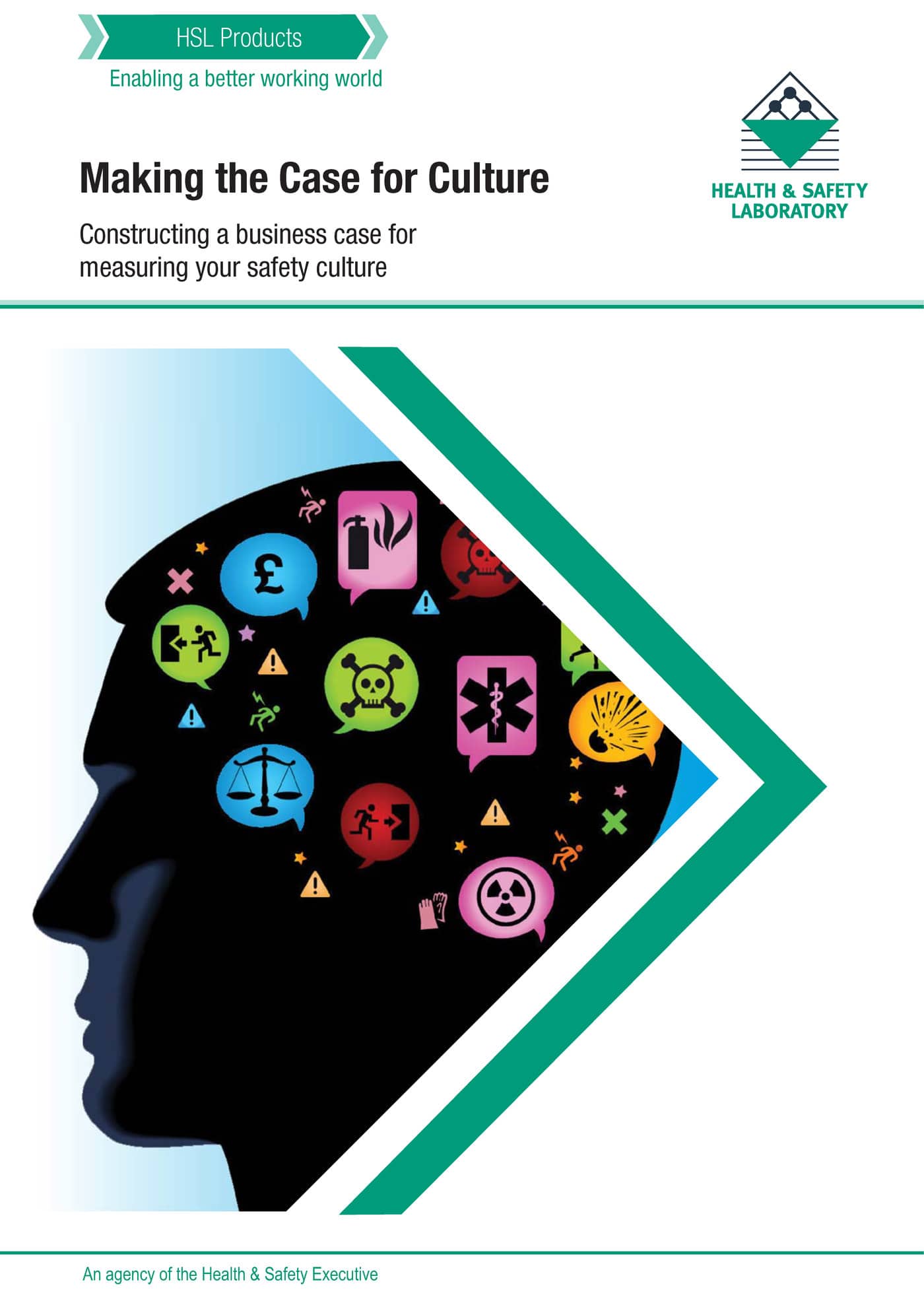Twelve months after the NSCA Foundation resurrected its occupational health and safety (OHS) conference program, SafetyCONNECT has settled into to a comfortable niche. This year’s conference, in an established Brisbane location has attracted around 140 delegates and almost 20 exhibitors. Perhaps most importantly is they have been able to attract entertaining and challenging local and international speakers. Continue reading “Power in simplicity – SafetyCONNECT”
Tag: safety culture
The fashion of safety culture
 In 2016, Professor Andrew Hopkins urged occupational health and safety (OHS) professionals to abandon safety culture. In the December 2016 edition of OHS Professional magazine ($), he writes further about this position.
In 2016, Professor Andrew Hopkins urged occupational health and safety (OHS) professionals to abandon safety culture. In the December 2016 edition of OHS Professional magazine ($), he writes further about this position.
Several of Hopkins’ statements make the reader stop, sit up and reflect. He writes
“What people do is something company leadership can indeed control, while what people think is neither here nor there“(page 28 – emphasis added).
POW!, there goes a lot of the safety training that is provided.
What can we learn about Change from hearing loss in a Korean factory?
 I have purchased Kevin Burns’ book “PeopleWork” after receiving an email promotion but before I did I followed the link to his website and watched an embedded video where Kevin says:
I have purchased Kevin Burns’ book “PeopleWork” after receiving an email promotion but before I did I followed the link to his website and watched an embedded video where Kevin says:
“At no time in history have there been better processes and procedures in workplace safety and at no time in history have there been more certified safety professionals but at the same time the number of workplace incidents keep rising across the board.”
Any salesman is allowed some hyperbole but the last point does not stack up and is a bit confusing. For instance workplace fatalities have been declining in Australia for some decades but new work-related hazards are being acknowledged and existing hazards that were once dismissed are now being addressed. The number of certified occupational health and safety (OHS) professionals is irrelevant as the laws have existed for much longer and it is the laws with which employers must comply, not the advice of the OHS professional.
But Kevin Burns talks specifically about the number of workplace incidents and this is almost impossible to quantify.
Just after I purchased Kevin’s book I received a research paper entitled “
Podcast tackles Safety Culture
 The latest episode of the Cabbage Salad and Safety podcast is now available and includes a discussion on the perennial occupational health and safety (OHS) debate over Safety Culture.
The latest episode of the Cabbage Salad and Safety podcast is now available and includes a discussion on the perennial occupational health and safety (OHS) debate over Safety Culture.
Siobhan Flores-Walsh and I discuss the role of safety culture and its influence on contemporary safety management. The definition is fluffy and this is part of the challenge in improving a company’s safety culture. I think the podcast episode is a useful primer on the issue to those who are just making contact with the concept and of interest to those of us who are already dealing with safety culture and people’s expectations for it.
Cabbage Salad and Safety podcasts are changing all the time and we read all the feedback and comments that listeners have emailed in. Please have a listen and email me your thoughts for future episodes or please comment below if you prefer.
Serious questions raised (again) about the role of safety culture
One of the central tenets of modern safety management is the need to establish a safety culture. However recent Australian research has cast serious doubt on whether this current belief is valid or useful.
 In October 2014, the Safety Institute of Australia launched several new chapters to the Body of Knowledge (BoK) project. One of those chapters, based on a literature review and authored by David Borys, addresses organisational culture* and says that safety culture:
In October 2014, the Safety Institute of Australia launched several new chapters to the Body of Knowledge (BoK) project. One of those chapters, based on a literature review and authored by David Borys, addresses organisational culture* and says that safety culture:
“… [has] limited utility for occupational health and safety (OHS) professional practice.”
“… literature has unresolved debates and definitional dilemmas.”
“…..remains a confusing and ambiguous concept in both literature and in industry, where there is little evidence of a relationship between safety culture and safety performance.”
These findings should cause all OHS professionals and company executives to re-evaluate the safety culture advice and products that they have received over the last decade.
Technical and practical advice on applying the maturity matrix
 Corporate maturity, especially in the area of workplace health and safety, is an increasingly important consideration in determining the preparedness of an organisation to change and embrace OHS as a crucial element of its business operations. There are several advocates of determining corporate maturity usually based around Hudson’s five levels of maturity, the most recent seems to be the Australian Constructors’ Association (ACA) in conjunction with RMIT University (see parts 8-7 of the document pictured below), but these tools are often aimed at the upper levels of an organisation.
Corporate maturity, especially in the area of workplace health and safety, is an increasingly important consideration in determining the preparedness of an organisation to change and embrace OHS as a crucial element of its business operations. There are several advocates of determining corporate maturity usually based around Hudson’s five levels of maturity, the most recent seems to be the Australian Constructors’ Association (ACA) in conjunction with RMIT University (see parts 8-7 of the document pictured below), but these tools are often aimed at the upper levels of an organisation.
Recently the Center for Construction Research and Training (CPWR) produced a series of handouts that apply a variation of the maturity matrix to separate components of safety culture.
These levels include:
- Uninformed
- Reactive
- Compliant
- Proactive
- Exemplary.
Continue reading “Technical and practical advice on applying the maturity matrix”
Missed opportunity for making the business case on safety culture
 Recently the UK’s Health and Safety Laboratory (HSL) released its second white paper on safety culture. This paper is called “Making the Case for Culture” and outlines the three arguments for a workplace safety culture – legal, moral and financial – from which a safety business case can be built. Financial seems to get the most attention but this is perhaps because it is the element that is argued the least and the one that can get the greatest attention from company executives.
Recently the UK’s Health and Safety Laboratory (HSL) released its second white paper on safety culture. This paper is called “Making the Case for Culture” and outlines the three arguments for a workplace safety culture – legal, moral and financial – from which a safety business case can be built. Financial seems to get the most attention but this is perhaps because it is the element that is argued the least and the one that can get the greatest attention from company executives.
The document seems a little thin but it could be put that the simplicity of the presentation in a booklet designed to provide safety culture guidance is an advantage. It could also be argued that it is primarily a promotional pamphlet for the HSL’s very useful safety climate tool .
Continue reading “Missed opportunity for making the business case on safety culture”
